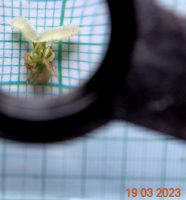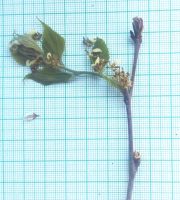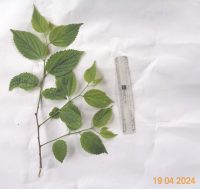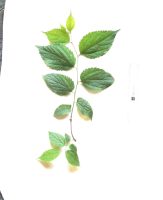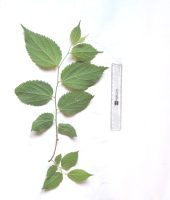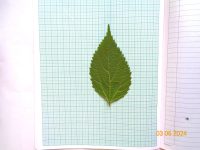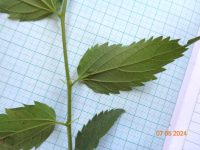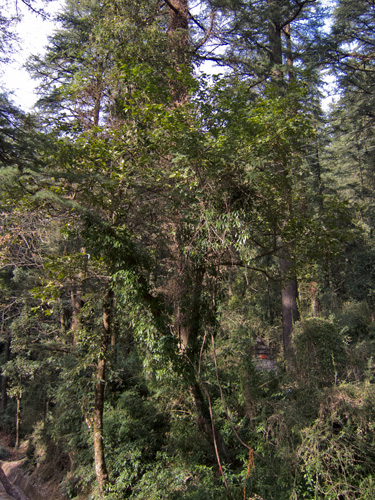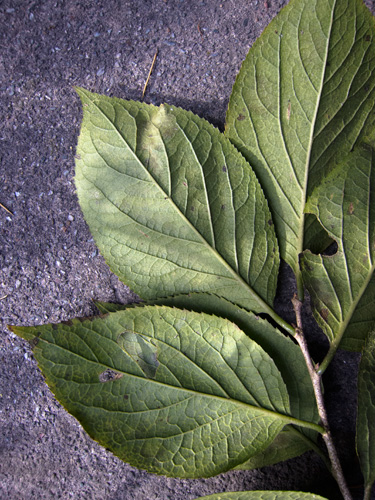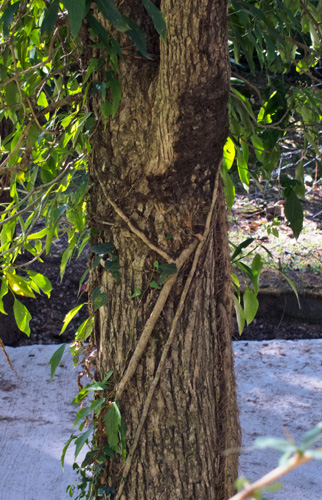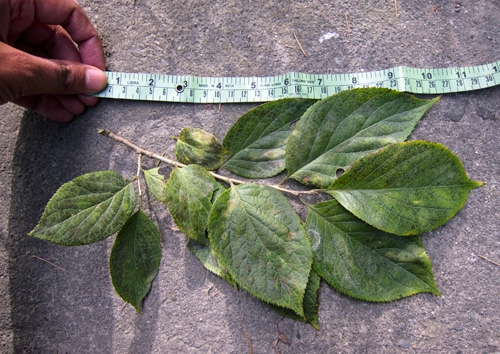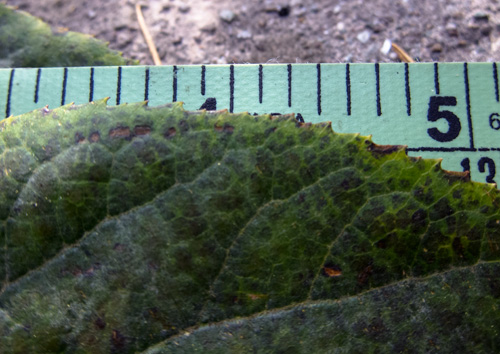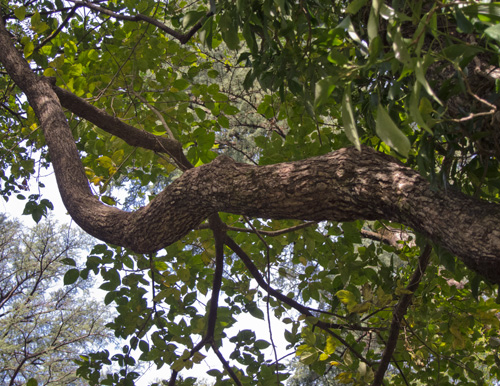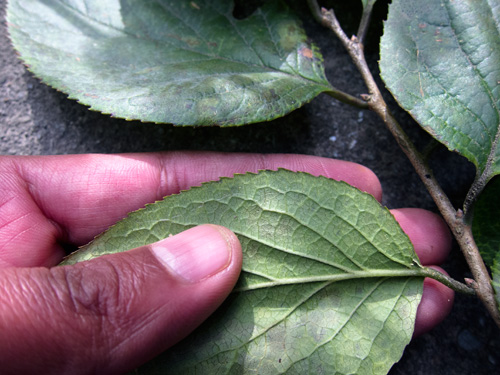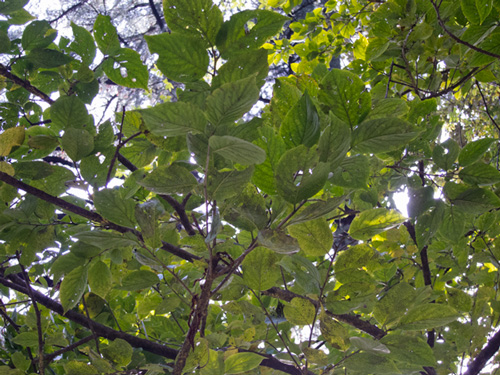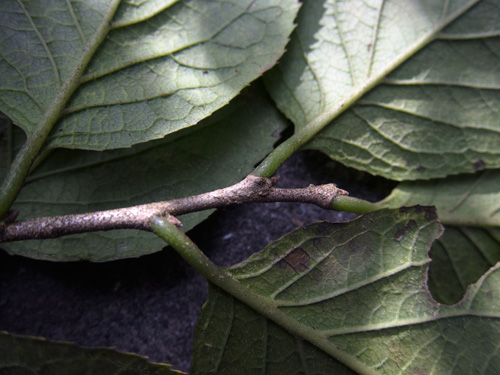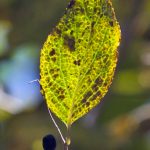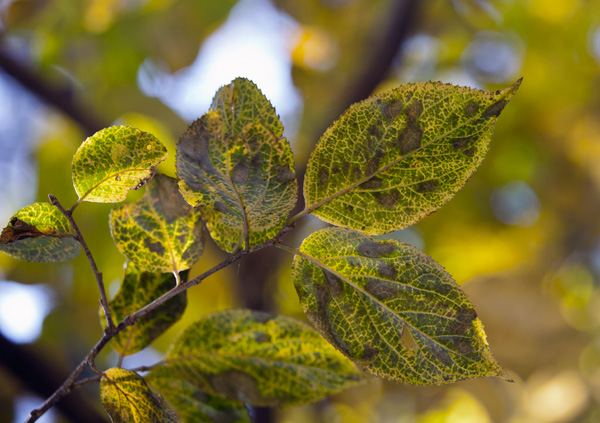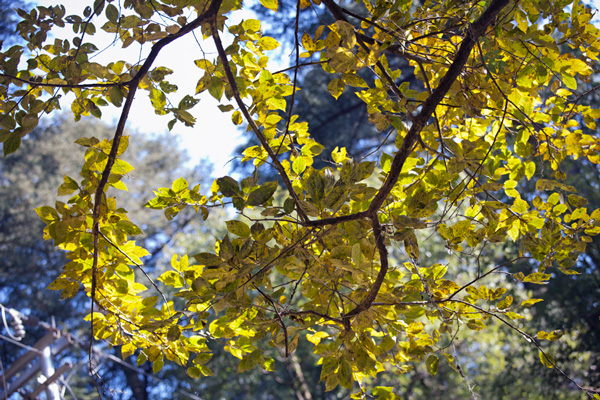|
Celtis caucasica Willd., Sp. Pl., ed. 4. 4: 994 (1806) (syn: Celtis arcata Buch.-Ham. ex Wall. ; Celtis australis subsp. caucasica (Willd.) C.C.Towns. ; Celtis caucasica var. caudata Planch. ; Celtis caucasica subsp. caudata (Planch.) Grudz. ; Celtis caucasica var. cuspidata Planch. ; Celtis caucasica var. tupalangi (Vassilcz.) Bondarenko ; Celtis inglisii Royle ; Celtis tupalangi Vassilcz.) ;
. Türkiye to Central Asia and Assam: Afghanistan, Assam, East Himalaya, Iran, Iraq, Kazakhstan, Kirgizstan, Nepal, North Caucasus, Pakistan, Tadzhikistan, Transcaucasus, Turkey, Turkmenistan, Uzbekistan, West Himalaya as per POWO; . Celtis australis AT MAR 2017/27 : 3 posts by 2 authors. Attachments (4)
Celtis australis I think it should be Celtis caucasica (syn: Celtis australis subsp. caucasica (Willd.) C.C.Towns.) as per discussions at Help identify this Celtis species
POWO does not give any distribution of Celtis australis L.in India. To me it seems that photo 4 (6317) is from a different species. Photos 1 and 2 are of C.caucasica. . Celtis australis: 1 high res. image. I think it should be Celtis caucasica (syn: Celtis australis subsp. caucasica (Willd.) C.C.Towns.) as per discussions at Help identify this Celtis species
POWO does not give any distribution of Celtis australis L.in India. It is an Alien species.. Reported by Zafar Ahmad Reish from Srinagar city Please check the flower.
The flower of C.caucasica is very different from the flower of C.australis.
Most people who do not check the flower may identify it as C.australis.
Even Lawrence in his book (published in 1895) wrongly identified Brimij as C.australis.
However a look at the flowers makes the difference very clear.
I do not think anyone has reported the presence of tree with flowers like C.australis from Kashmir.
Yes …, you are right C. caucasica. .
Pl. see In my plant flowers are perfect (the male and female flowers are not separate). Also the leaves are serrated almost to the base as in C.australis. A look at the photos will make it clear. I think those who identified it as C.australis did it on the basis of the leaves.
It is interesting that Marathi name Bramuj is very similar to the Kàshmiri name Bramij. Celtis genus is an interesting genus and some scholars have identified Lotos tree of greek mythology made famous by Tennyson as Celtis australis.
In Kashmir Brimij is planted in graveyards and shrines attesting to some now forgotten mythology associated with the tree.
Photo of flower of C.australis from illustration in Public Domain
… in the list of Kashmiri names posted on this site has identified Brimij as Celtis caucasica. So I would take this plant to be C.caucasica.
I could not locate a photo of the flower of C.caucasica on the net by google search.
I hope the photo of flowers posted by me will be useful in this regard. Celtis australis Linn. which was once considered to be widely distributed and reported from India also in FBI and Brandis is now considered distributed in mostly Europe, and as such C. australis of Indian Authors incl FBI, Brandis i.e. Auct. (Non Linn.) distributed in Himalayas, Pakistan, Afhanistan etc. is correctly C. caucasica Willd.
Many thanks for confirmation.
Photos of flowers which I have posted are very different from those of C.australis and led me to suspect that it is a different species which was confirmed from the list of Kashmiri names of plants that you had posted.
..
Celtis tetrandra?/ABDEC35 : 8 posts by 2 authors. Attachments (9)
 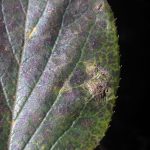 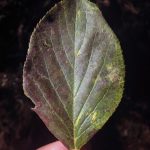 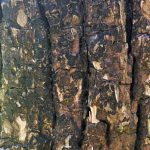 I found two very large trees of the same species this evening. Can we hazard a guess to the genus? Please advise. I am attaching a couple of additional photos. 4 images. efi page on Celtis tetrandra
Please find the plant ID for link below: efi thread Thank you … for this and the other ID. Please pass on my thanks to … I think it should be Celtis caucasica (syn: Celtis australis subsp. caucasica (Willd.) C.C.Towns.) as per discussions at Help identify this Celtis species 1. From stem bark it is not Celtis species, in Celtis its grey, smooth or sometime with white specks, You have identified these as A reply:
“Please find the plant ID for link below:
Celtis australis L.
Leaves coarsely serrate to the base, drupes purplish-black, a non-native cultivated tree species, common in submontane and montane Himalaya.
Khirk, European Nettle Tree.”
. References: POWO Flora of Pakistan FoP illustration Annonated checklist of Flowering plants of Nepal Wikipedia PFAF Useful Tropical plants Trees and Shrubs Online |
Disclaimer
1. For any mistake in identification or for becoming efloraofindia e-group member (for contributing towards building of efloraofindia or otherwise), pl. mail to indiantreepix@googlegroups.com or itpmods@googlegroups.com
2. For better viewing of species’ pages, colour scheme & formatting is being followed as: Description of the species, Details of other flora species on the same page, Uses/ harms, Distribution, Abundance/ Location/ Flowering time & date, Habit & habitat, Etymology & pronunciation, Other interesting information, stories etc., Others, Botanical names, Common names, Main point of discussion below, Discussion about Botanical names.
Navigation
- Award for eFloraofIndia
- Colour scheme & formatting
- Copyrights, Permissions, Citations
- eFloraofIndia appreciated
- Names of Plants in India site
- Flowersofindia site
- Posting Guidelines
- For members’ information
- Logo, Tagline, Acronym
- Volunteers required
- ‘Pitamah’ of eFloraofIndia
- ‘अजेय’ ‘Ajey’ of eFloraofIndia
- ‘Saarthi’ ‘सारथि’ of eFloraofIndia
- ‘Jewel’ of eFloraofIndia
- ‘Grassman’ of eFloraofIndia


